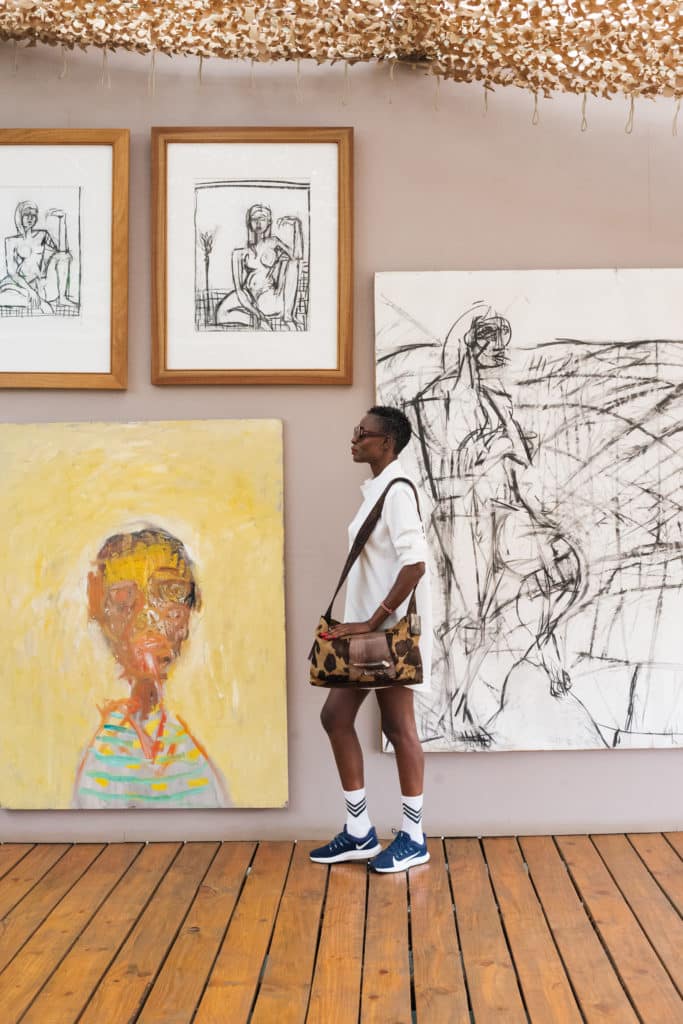
It was just over two decades ago that German-born, Kenya-raised fashion designer Anna Trzebinski launched her eponymous line of luxe women’s apparel and accessories inspired by the traditional crafts and ancestral fashion seen across the African content. A loyal following quickly developed; in a few short years, her one-of-a-kind pieces could be spotted from South Africa to the United States, where she ended up opening an outpost of her boutique in ritzy Aspen. But as the pandemic gripped the world in 2020, Trzebinski was confronted with tough decisions in order to keep her business—and the all-women team of artisans employed in her studio—afloat. Another source of income, the tenant who had been operating a hotel out of the Nairobi home she built with her late husband, artist Tonio, had terminated their contract. Then borders across Africa were sealed for months. What was Trzebinski to do other than look inward? And that she did, dreaming up her very own interpretation of Eden; a design-centric sanctuary brimming with handcrafted totems, family artwork, custom furnishings, and decor sourced from around the continent. The result? Trzebinski’s beloved estate has become into most coveted boutique stay in Nairobi. HAP spoke with the designer to learn more.
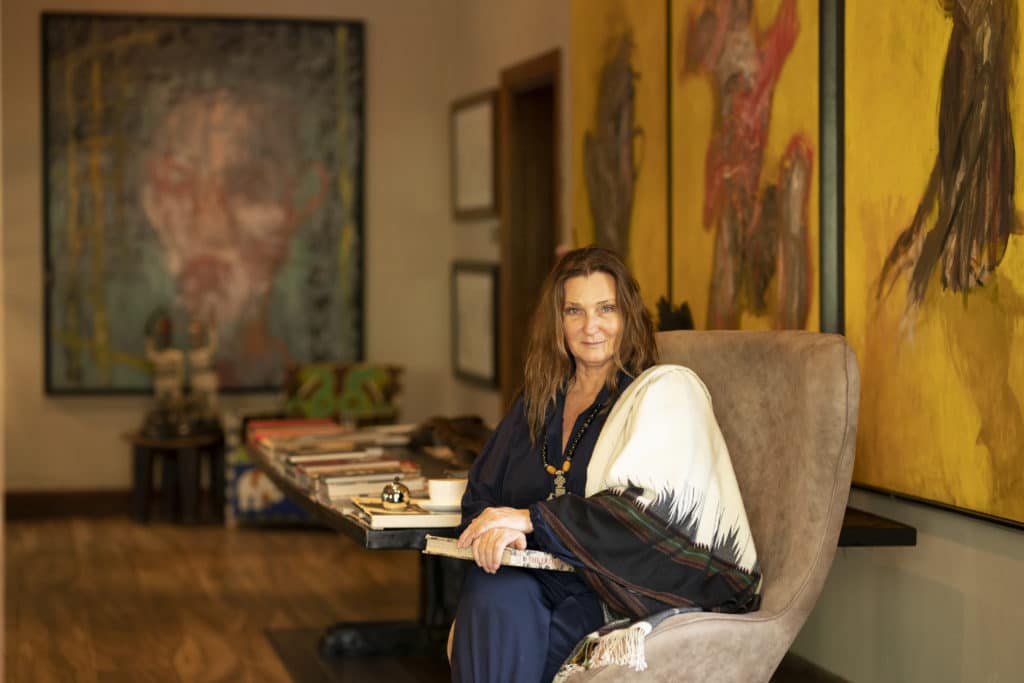
What prompted your interest in fashioning a hospitality venture like Eden from scratch?
Though I had experience in hospitality through my Lemarti’s Camp venture, this particular venture was 100% by necessity. Think of the timing—who starts a hotel on April 1, 2020?!
Was the pivot from fashion design to boutique hotelier spurred by the pandemic or was it a vision you long held on to, and finally acted upon?
It was spurred by the pandemic, which caused the loss of a tenant who was operating a hotel on my property (the former OneFortyEight Hotel). Creating my own retreat was a way to save my land and home. As the reality of 2020 and 2021 unfolded, it was organically woven in.
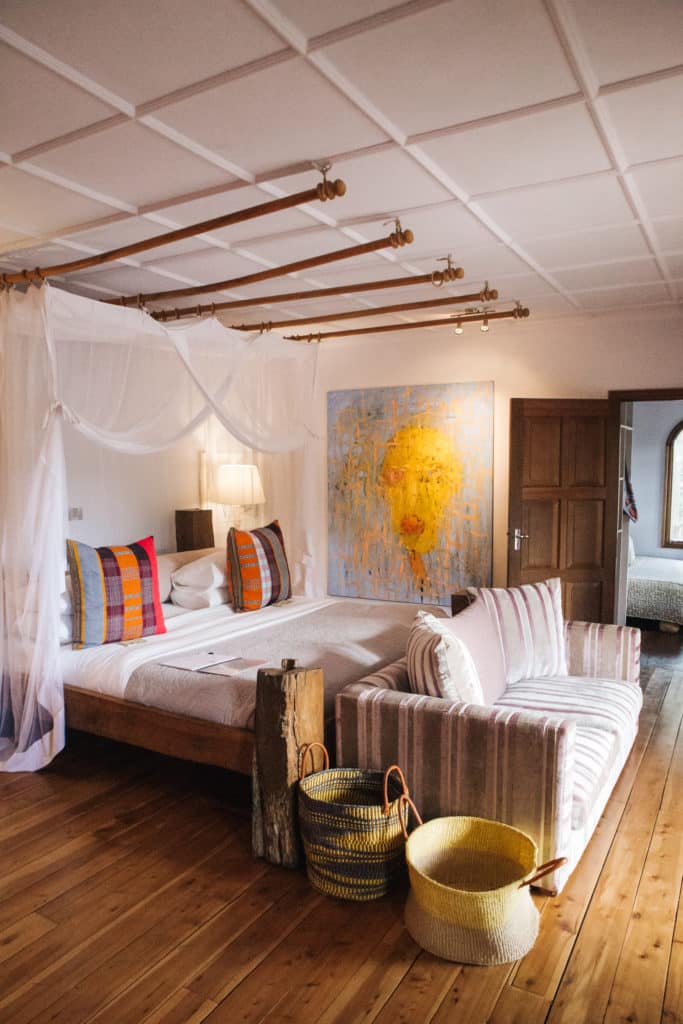
Since each of the gorgeous rooms at Eden is individually designed, are there any unique themes that tie the furnishings, fixtures, and artwork together?
Every room’s design is very deliberately driven by the works of art in each space. The hanging of the extensive collection of Tonio’s (Trzebinksi) works was the first task I completed after totally repainting. Across the board, my favorite places are the ones where you find yourself in the treetops. Every room has a different forest immersion at the tree top level, but it’s so beautifully serene and unique. I have always loved this forest so much.
I would say it’s really the art that anchors the spaces. Then I used all our personal furniture and accent pieces and collected items as the fiber that ties it together. I’ve spent my life creating and collecting. In addition, I wanted to bring a more contemporary edge to a place with which I’ve had a lifelong love affair, and in which I have passed through so many portals in life.
I am a different person now: I had a new mindset, a new emerging healing, a new homecoming, and a new burgeoning of my hometown, Nairobi. It’s the beloved city in which I came of age, so there was a more vivid use of colors, textures, and fabrics. I also extended the property by almost two acres, and have landscaped, designed, and built new features and structures that are small yet monumental. One example is the woman-made pond and the open-air deck with its beautiful egg bar.
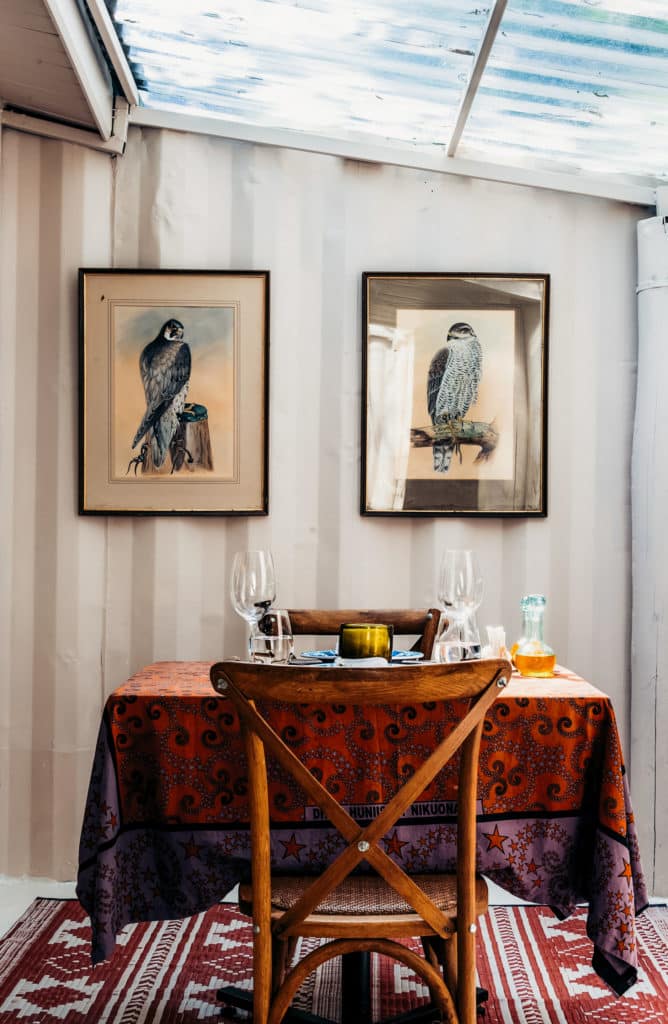
Are most of the pieces bespoke or sourced from local markets?
Everything has been collected, custom-made, or sourced locally; some during the pandemic, which also provided a lot of artisans with income during a terrifying time. I also bought a lot of things on Facebook as a vast number of ex-pats all fled the country and were selling items for a song to just get back home to their loved ones. The miracle was that I built the hotel on a shoestring using my wealth of existing furniture, art, and collection of objects, along with my local knowledge—and a lot of luck!
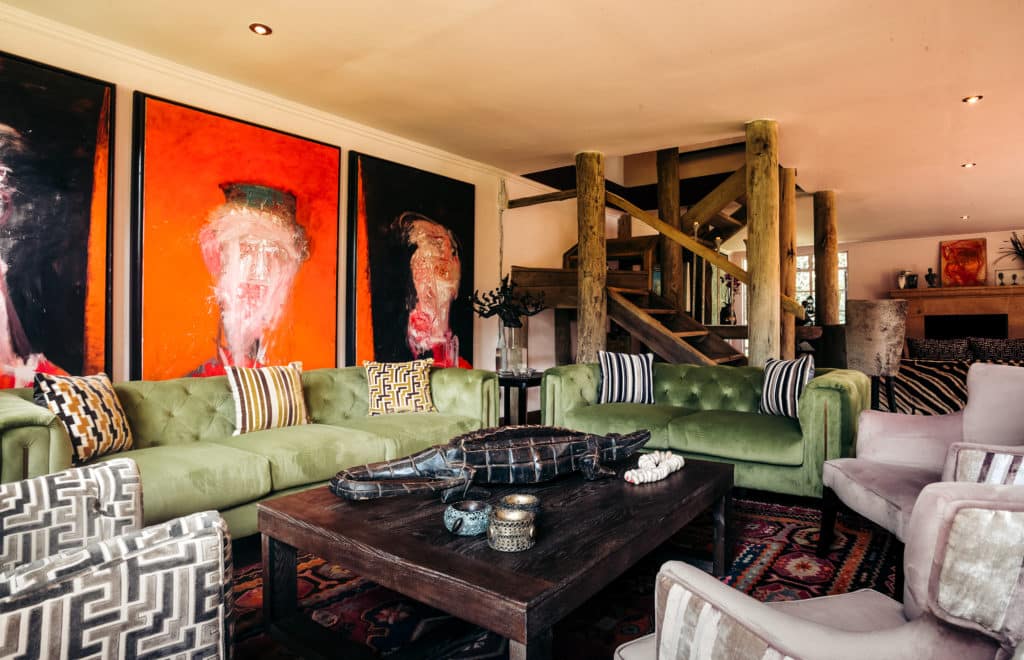
What can you tell us about the intersection of fashion and interior design?
I suppose that my sensibility as a creator is the same. Africa, my home continent, certainly inspires me. But I also love contemporary spaces and have long been admiring amazing Brazilian interiors through the incredible site 1stdibs and its inspiring online magazine Introspective. I personally love rich textures rooted in culture, layering details, and somehow interspersing potentially very overpowering works of art with inviting areas
In my fashion and with interiors, I feel like the person wearing it or the person in the space should be the most important audience. So I want people to feel empowered, connected, and inspired. And of course, everything has an authentic root and is handmade.
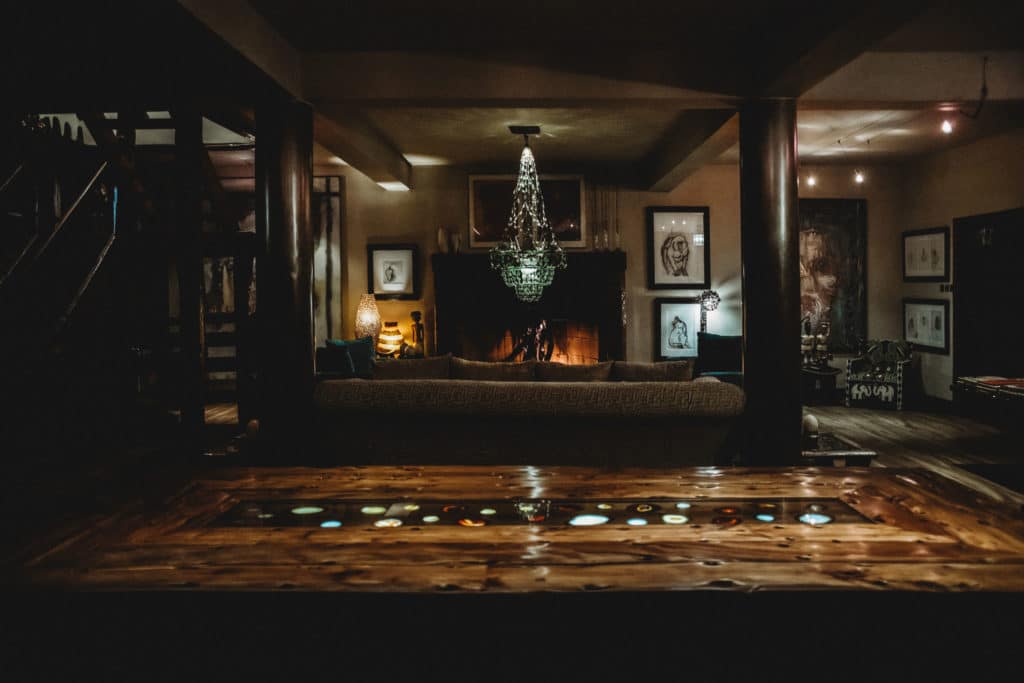
Did it feel intuitive to revamp the compound or was it a departure from your normal creative process?
It was not really a departure, no. I designed, built, and decorated the main house of Eden with my late husband when I was only 24 years old. I had handmade, built, and stitched Lemarti’s Camp from the earth up—from every detail right down to the menus—to create an authentic immersive experience. So in actuality, somehow, I feel far more confident and deliberate in living spaces. My company has always been a lifestyle brand based on themes like Kenyan city life, bush life, beach, and archipelago life, where the garments and items which adorn you act as a natural extension.
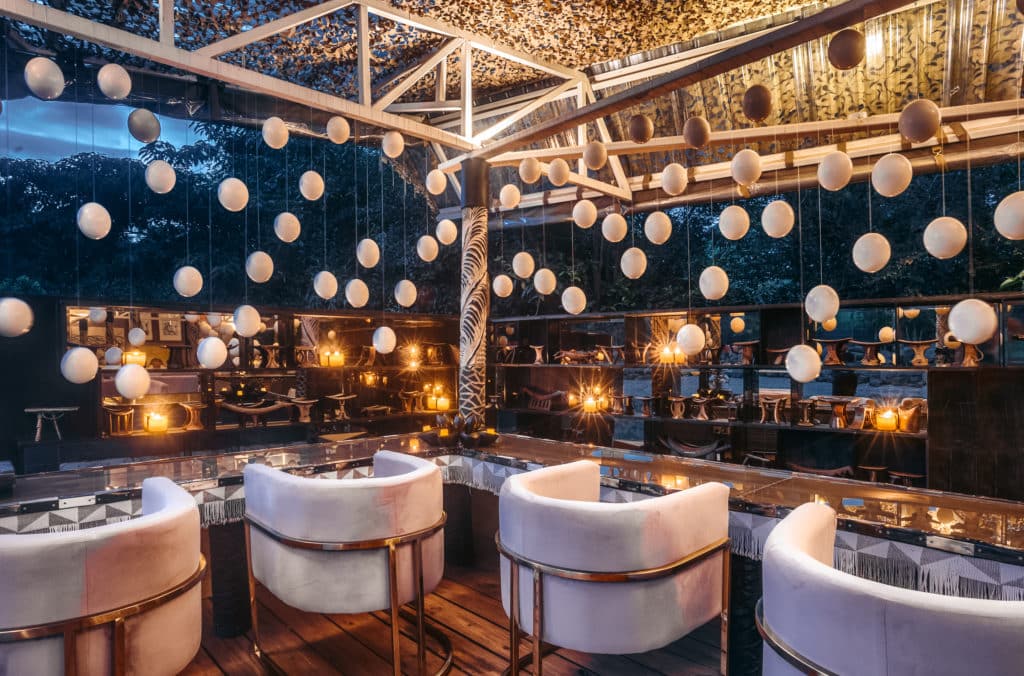
Were there any hotel properties or hospitality experiences that influenced how Eden would be manifested and operated?
Well, I think mostly I looked at the iconic restaurants of the world for the deck: Harry’s Bar in Venice, Sant Ambroeus and Harry Cipriani at the Sherry Netherland Hotel in NYC, London’s iconic private clubs, and of course, iconic Kenyan restaurants like Alan Bobbe’s Bistro and the original Tamarind.
As for hotels, I was mostly inspired by La Colombe d’Or in the South of France. From the outset, I thought of creating a private club, but to be honest, straightforward hospitality is much easier. I also wanted to weave in authentic factors of my past, like the staff from Lemarti’s Camp and my connection to the Samburu people. I was married to a Samburu for 15 years.
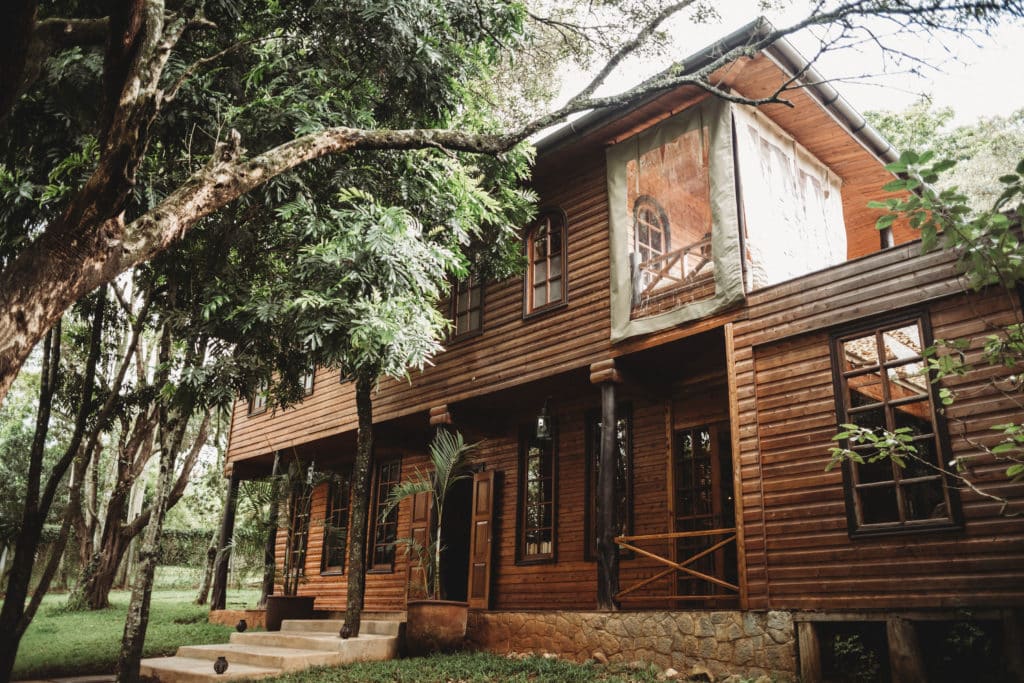
What kind of guests do you hope to attract? And what are some of the thoughtful experiences that you can offer guests, either on-property or off?
I really wanted to share my deep love for my country: I am also a woman who spent her whole life in Nairobi. This is where I spent my childhood, where I came of age in my adolescence, and this is where I live now. It’s very hard to convey the extraordinary country that Kenya is—the rich, vibrant mix of tribes and cultures and the giant pool of extraordinary talent that we are blessed to have around us.
The global pandemic was really a time when we truly reflected back on our homeland. Local creatives thought long and hard about who we are, what we consider to be our “us-ness,” and why we need external validation. Turns out, we don’t. The brave and raw way in which I created Eden seemed to inspire others to express their voices without reservation.
I hope to attract discerning travelers who wish to really get to know Kenya rather than arrive in khakis off to some kind of safari wonderland. There is an incredible array of amazing experiences on offer at Eden. The art immersions span all disciplines and we have the most extraordinary hosts. But it goes way beyond that. Nairobi is just one of the African hubs exploding with creative expression, from the food space to film, to fine art to performance art… It’s quite staggering what is going on in Africa.
Africa is finding its voice. It’s a continent begrudgingly rooted in the past, trying to throw off the shackles of a temporary era of colonialism. This is necessary to connect to and express an unbelievable history that goes back millions of years while spotlighting the extraordinary cultures and epochs of recent times.
Did you know that the seafarer Abu Bakar from West Africa visited—note visited, not discovered—the Americas long before Columbus? There are so many examples of a whitewashed history. But all this is being explored and interpreted in a contemporary way.
And finally: Are any upcoming travel that you’re excited about?
I’ve just restored three beautiful old wooden sailboats I found lying around and I am heading off on a voyage with these three exquisite beauties that sail in the simple ancient way. We will use the trade winds to explore the Lamu Archipelago and its many islands, sailing up to an island called Kiwayu. It’s hard to explain how magical this way to travel is. I’ve done it many times, but never on my own boats. It’s the third extraordinary adventure I have been privileged to go on this year, after visiting The Sacred Forest of the Lost Child and then the Milgis Lugga in the remote north of Kenya to spend time with the Samburu people. I can’t tell you how I count my blessings.
Other articles you may like: